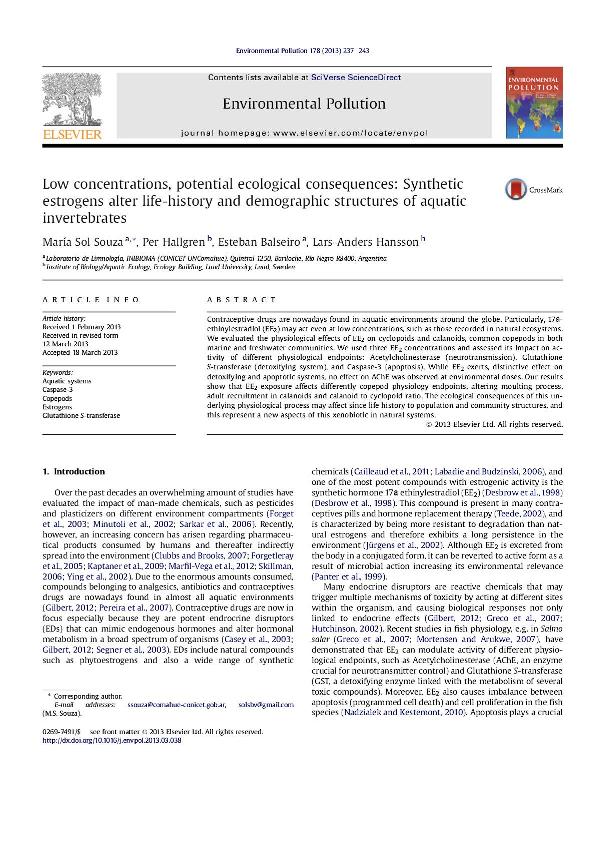Artículo
Low concentrations, potential ecological consequences: Synthetic estrogens alter life-history and demographic structures of aquatic invertebrates.
Fecha de publicación:
04/2013
Editorial:
Elsevier
Revista:
Environmental Pollution
ISSN:
0269-7491
Idioma:
Inglés
Tipo de recurso:
Artículo publicado
Clasificación temática:
Resumen
Contraceptive drugs are nowadays found in aquatic environments around the globe. Particularly, 17α-ethinylestradiol (EE2) may act even at low concentrations, such as those recorded in natural ecosystems. We evaluated the physiological effects of EE2 on cyclopoids and calanoids, common copepods in both marine and freshwater communities. We used three EE2 concentrations and assessed its impact on activity of different physiological endpoints: Acetylcholinesterase (neurotransmission), Glutathione S-transferase (detoxifying system), and Caspase-3 (apoptosis). While EE2 exerts, distinctive effect on detoxifying and apoptotic systems, no effect on AChE was observed at environmental doses. Our results show that EE2 exposure affects differently copepod physiology endpoints, altering moulting process, adult recruitment in calanoids and calanoid to cyclopoid ratio. The ecological consequences of this underlying physiological process may affect since life history to population and community structures, and this represent a new aspects of this xenobiotic in natural systems.
Palabras clave:
Plancton
,
Estrogenos
,
Enzimas
Archivos asociados
Licencia
Identificadores
Colecciones
Articulos(INIBIOMA)
Articulos de INST. DE INVEST.EN BIODIVERSIDAD Y MEDIOAMBIENTE
Articulos de INST. DE INVEST.EN BIODIVERSIDAD Y MEDIOAMBIENTE
Citación
Souza, María Sol; Hallgren, Per; Balseiro, Esteban Gabriel; Hansson, Lars Anders; Low concentrations, potential ecological consequences: Synthetic estrogens alter life-history and demographic structures of aquatic invertebrates.; Elsevier; Environmental Pollution; 178; 4-2013; 237-243
Compartir
Altmétricas




